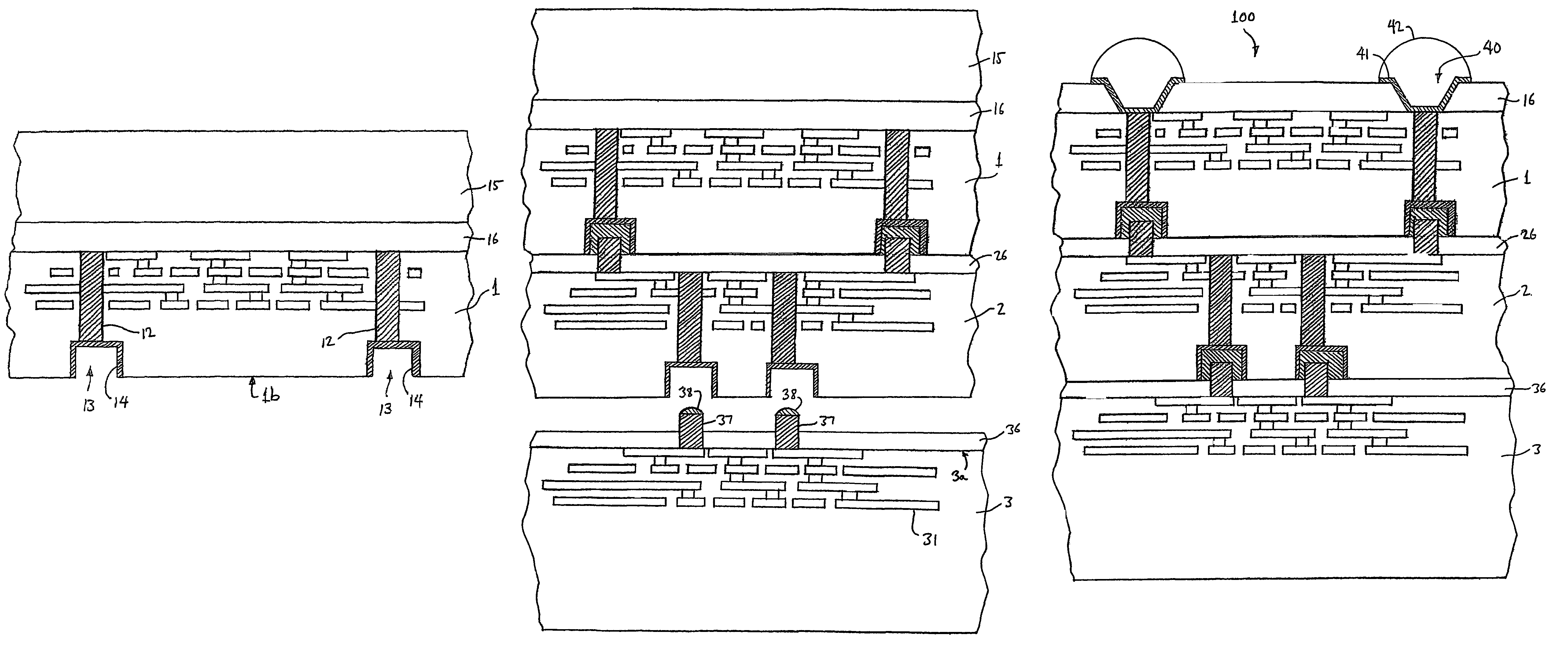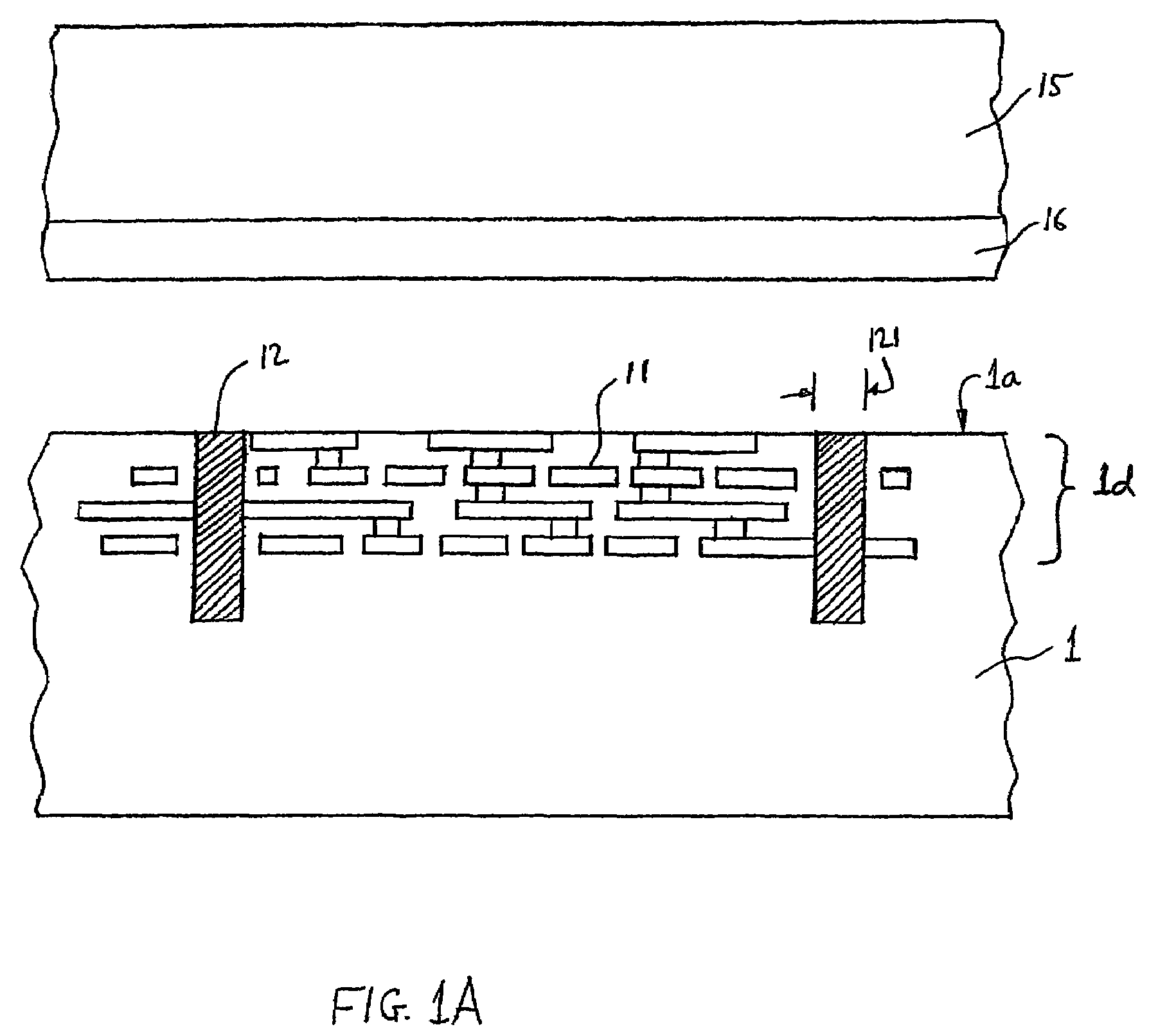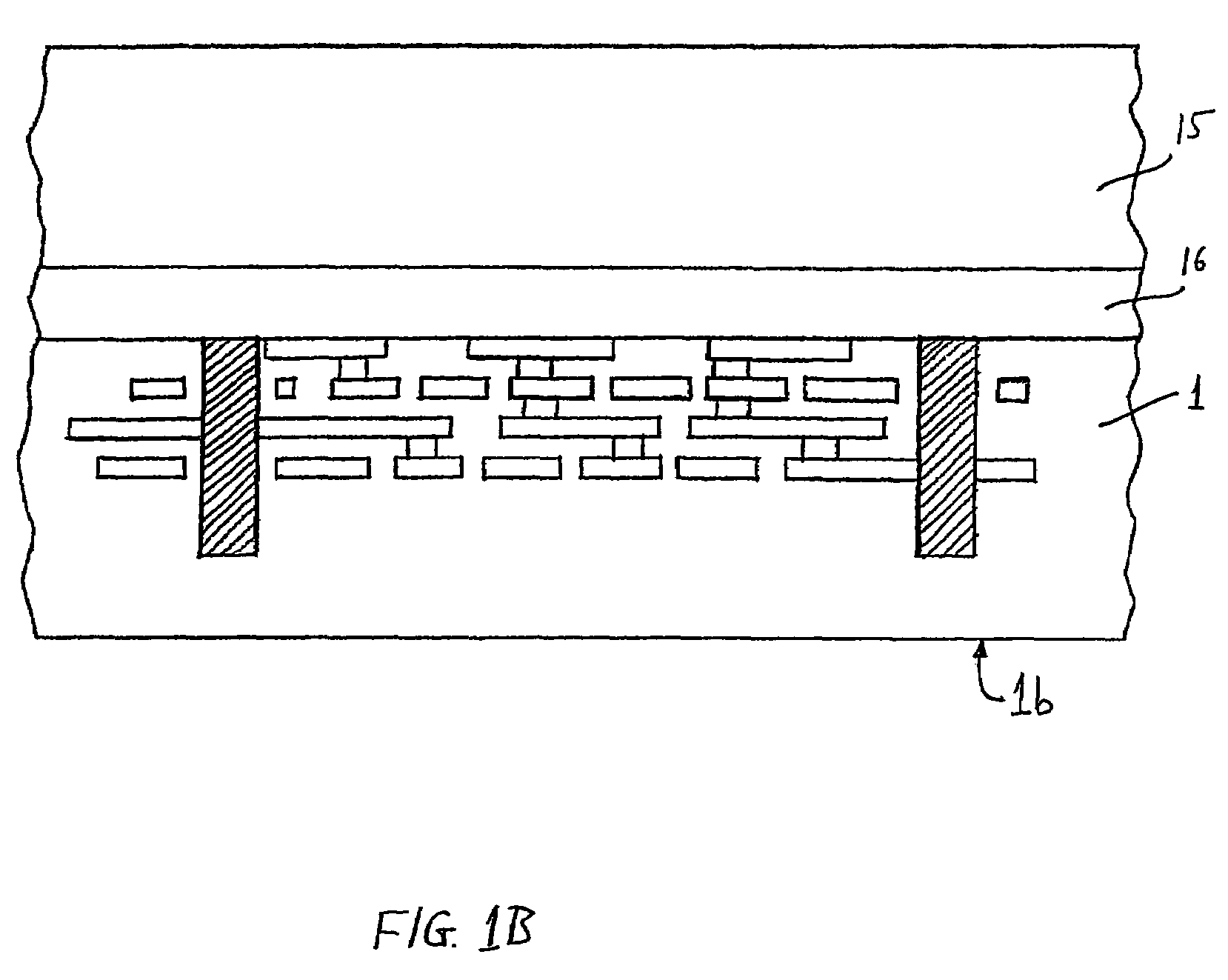Three-dimensional device fabrication method
a fabrication method and three-dimensional technology, applied in semiconductor devices, semiconductor/solid-state device details, electrical devices, etc., can solve the problems of severely limited performance of microprocessors, restrictions on the amount of cache memory, etc., and achieve the effect of relaxed requirements for wafer flatness and highly precise alignment between wafers
- Summary
- Abstract
- Description
- Claims
- Application Information
AI Technical Summary
Benefits of technology
Problems solved by technology
Method used
Image
Examples
Embodiment Construction
[0015]In accordance with the present invention, a plurality of thinned wafers with devices formed thereon may be stacked and vertically interconnected. In the embodiments described herein, a three-level stack is fabricated and connected; it will be appreciated that this is for illustration purposes only, and that the process may be adapted to more or fewer than three levels. The 3-D, vertically integrated device may be constructed in two ways, as detailed below.
(1) Top-down Wafer Stack Process
[0016]FIG. 1A shows in cross-section a wafer 1 having devices and several levels of high-density interconnection wiring 11 (typically Cu) in a region 1d of the wafer near the front surface 1a thereof Metallized vias 12 are formed in the wafer, extending below the region 1d of devices and lateral interconnects; these vias will become part of the vertical through-connections after wafer 1 is thinned. Vias 12 are typically formed by etching holes in wafer 1, forming a layer of liner material on th...
PUM
 Login to View More
Login to View More Abstract
Description
Claims
Application Information
 Login to View More
Login to View More - R&D
- Intellectual Property
- Life Sciences
- Materials
- Tech Scout
- Unparalleled Data Quality
- Higher Quality Content
- 60% Fewer Hallucinations
Browse by: Latest US Patents, China's latest patents, Technical Efficacy Thesaurus, Application Domain, Technology Topic, Popular Technical Reports.
© 2025 PatSnap. All rights reserved.Legal|Privacy policy|Modern Slavery Act Transparency Statement|Sitemap|About US| Contact US: help@patsnap.com



